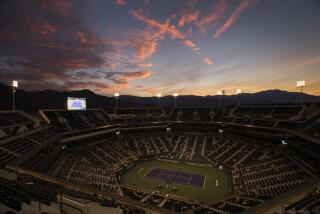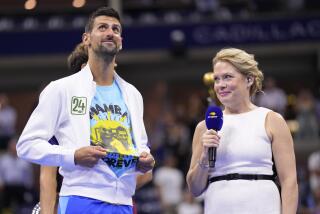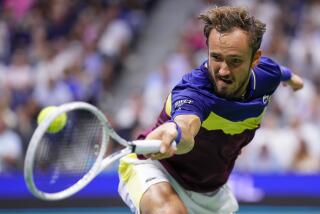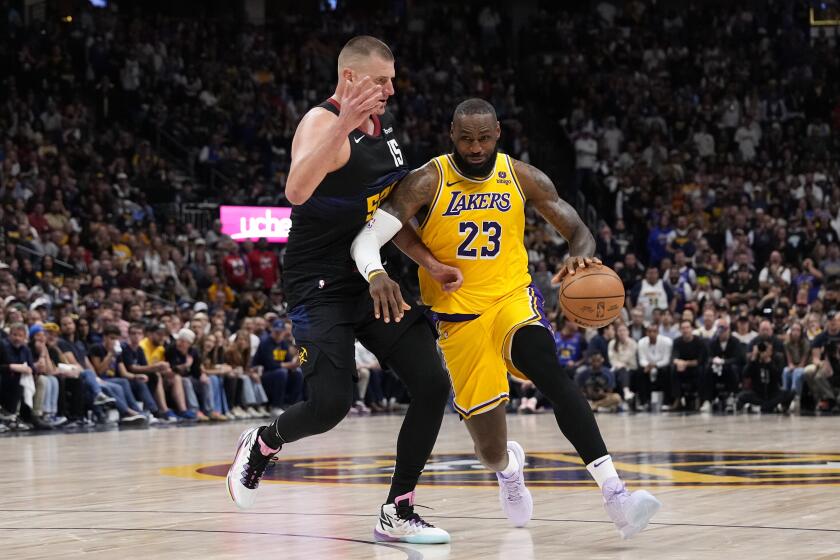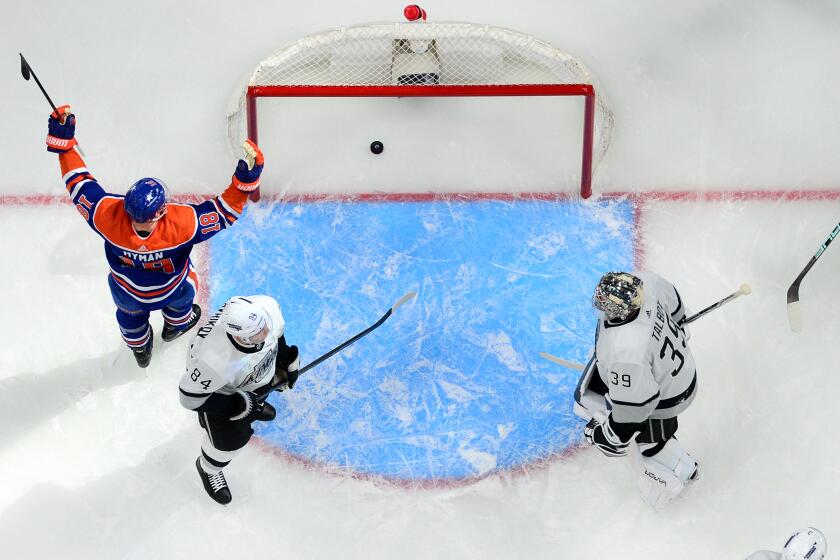French Open’s red clay doesn’t intimidate Americans Jack Sock and John Isner

Novak Djokovic hits a return during his victory over Jarkko Nieminen at the French Open on Tuesday.
— Ah, the French Open, the time of year when a certain question is asked repeatedly by United States tennis fans: Why can’t the country’s players, particularly the men, find success on red clay?
Now along comes Jack Sock, a 22-year-old born in Nebraska and a Florida resident, who calls the slow stuff “my favorite surface.”
Yes, that’s right, even though there are not many red clay courts in the U.S. — Sock first encountered them in Europe — and even though, at first glance, they’re considered less than ideal for players who thrive on speedy serves and forehands. Sock and another U.S. man, 16th-seeded John Isner, both fit that description. Both won first-round matches at Roland Garros on Tuesday.
“This just suits my game very well,” Sock said. “I’m able to take my time and kind of maneuver the ball around. Movement is another big part of my game. I feel like on the clay, I get to a lot of balls.”
He did that Tuesday on during a 7-6, (7), 6-2, 6-3 victory over Bulgaria’s Grigor Dimitrov, who was a Wimbledon semifinalist last year and was seeded 10th in Paris, making him the top man to lose so far.
Dimitrov’s take?
“Jack played his game,” he said.
Sock hit 30 winners and made only 18 unforced errors, 10 fewer than Dimitrov, and saved all six break points he faced. Pounding serves at up to 136 mph, leaping into his big forehands, and effectively pressing forward to win the point on 19 of 25 trips to the net.
“I may have been one of the first to really like it,” said Sock, who won his first ATP singles title last month in Houston on green clay. “For me personally, I look forward to this time of year.”
The 6-foot-10 Isner, who beat Italy’s Andreas Seppi, 7-5, 6-2, 6-3, is also learning to like the crushed dirt.
“A lot is said about clay and how it’s a defensive surface. It’s sort of, I would say, a misconception,” Isner said. “I think clay is a very good attacking surface. A guy like [Rafael Nadal], yeah, he plays great defense, but knocks the cover off the ball.”
Four of the seven U.S. men in this year’s field already are gone, as are 13 of the 17 U.S. women. Andre Agassi was the last American man to even get to the quarterfinals at the French Open, in 2003.
Sock, who won the 2014 Wimbledon doubles title, had surgery in December for a torn hip muscle, so his 2015 season began late. He also dealt with a more worrisome matter this year: His older brother had a serious lung infection.
“He’s doing much better now. He’s got full, I guess, health back,” Sock said. “It’s been a lot outside of tennis for me, a lot of stuff going on. It’s motivated me in a lot of ways to see a family member, and especially my brother, I’m very close with him, go through what he did. And I was in the hospital every day with him after I had surgery, so just back-to-back things that were very unfortunate.”
His win over Dimitrov represented the day’s only departure by a seeded man. Two seeded women were beaten: No. 6 Eugenie Bouchard, a semifinalist at the French Open and runner-up at Wimbledon last year but a loser of eight of her last nine matches, and No. 25 Jelena Jankovic.
Nadal, Novak Djokovic and Serena Williams, owners of 41 Grand Slam event singles titles among them, all delivered straight-set wins.
More to Read
Get our high school sports newsletter
Prep Rally is devoted to the SoCal high school sports experience, bringing you scores, stories and a behind-the-scenes look at what makes prep sports so popular.
You may occasionally receive promotional content from the Los Angeles Times.
